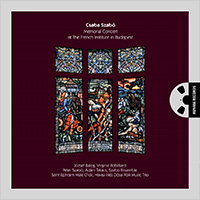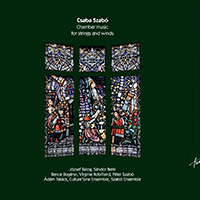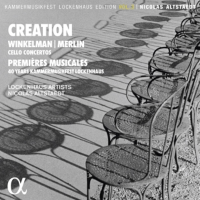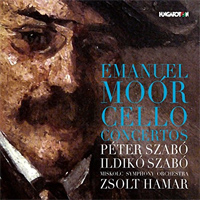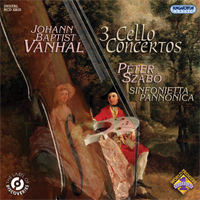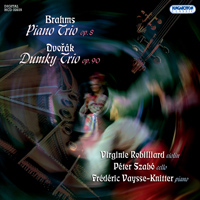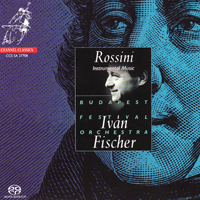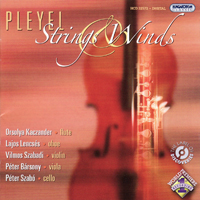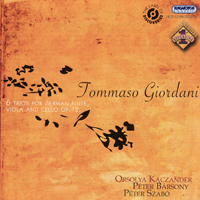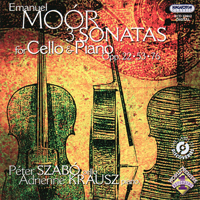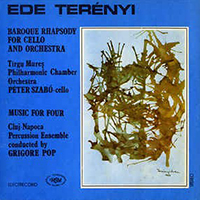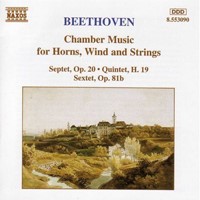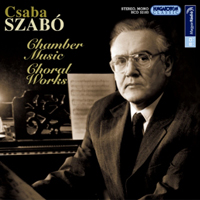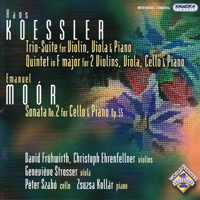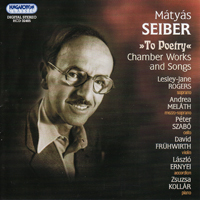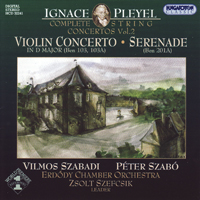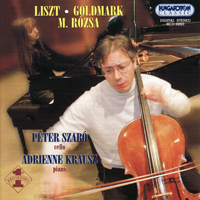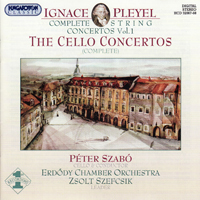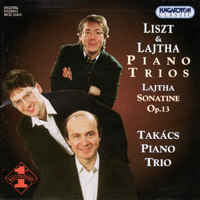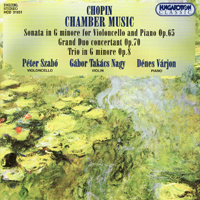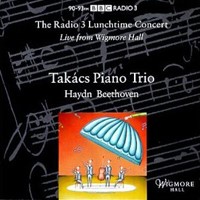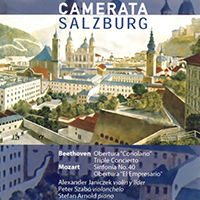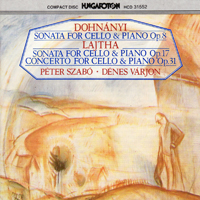CSABA SZABÓ: Chamber music and choral works
(...)
Laura Faragó - soprano
Péter Szabó - cello
Márta Gál, Dénes Várjon - piano
Camerata Transsylvanica
Conductor György Selmeczi Hungarian Radio Brass Quintet
Conductor Mátyás Antal
Hungarian Radio Chorus
Conductor József Makláry, Lajos Vass
Hungaroton HCD 32183
(...)
Csaba Szabó, was born in Transylvania but spent his last years in Szombathely and, similarly to Ferenc Farkas, little was known of his life or work and new influence on music. Judging by the recently released disc, he always put his works in traditional contexts. The majority of the pieces are retrospective in nature, like the Three Transylvanian folk songs (1986) which pays hommage to László Lajtha and the Passacaglia (1975) which was composed from the Kyrie eleison of János Kájoni's Transylvanian mass.
This artistic approach can be recognized when listening to the Sonatina for cello and piano in C (1992), subtitled Looking back. The retrospective attitude must have arisen from personal reasons as well: it is obvious that the Three Transylvanian folk songs – labelled well by the titles of the first two movements (My country is a foreign land; If you set off from Transylvania) – gives voice to the pain of the composer on his way to leaving his homeland. It seems that this homeland, Transylvania, is represented by the folk song, while the modern and improvisational accompaniment, which is thematically completely different from the vocal score, would represent a troubled state of mind. Experimenting with the contrast of the two worlds, the songs of Csaba Szabó are capable of removing the audience from the traditional conceptions of folk song adaptations.
The retrospective Sonatina has a much more traditional framework, which can be predicted from the C key. The piece is built from Baroque images, Debussy's melancholy, the stubborn Bulgarian rhythms of Bartok, and the melodiousness of Bhrams. Szabó bravely undertakes the school piece nature of the composition. Meanwhile, the Passacaglia places emphasis on experimentation and like the folk songs, focuses on the collision between the traditional and the modern. On the one hand, the majority of the compositional techniques are extremely modern, especially those concerning sound – the massive amount of dissonances, glissandos, orchestral noise-effects and the fragmented construction –, but on the other hand, the principle of variation, the archaic theme and the fuga canonica at the end of the composition point out the dominant role of traditionalism. In a unique manner the same duality is present in the Sonata composed for a brass quintet and recording tape. From the title the listener can conclude that the recording tape provides in itself a guarantee for novelty. Szabó applies a very simple method in the three-section third movement: he tapes the first part and he replays it in the third so that the brass can improvise counterpoints for it. However, the definition of the Sonata is striking: in fact, we hear three style pieces which exhibit the both constraints and improvisation.
The greatest merit of the disc is the multifaceted presentation of a life's work so far absent from the general knowledge of the musicians’ society. The CD is characterized by a certain diversity in genre and class alike, pieces written for different apparatus from the quarter of a century between 1967 and 1992 are juxtaposed. Our picture of the oeuvre is enriched by two selections of Csaba Szabó's choral compositions from the late sixties, which can be found at the end of the CD. These pieces naturally do not yet show the experimental originality of the subsequent years. The school-like folk song adaptations along with the more exciting poetic choral works, based on ancient Transylvanian poems are very traditional compositions. In sound, diction and form, they follow Kodaly (who was only in his thirties at the time) and are appreciations of his easy-flowing compositional technique.
The quality of the presentations on the recording is rather varied, but the Sonatina by Péter Szabó and Dénes Várjon is definitely an outstanding performance. It also proves that a European-level high standard interpretation is of utmost significance for all composers. Very often an even quality can be sufficient to make a piece acceptable, as happens with the Hungarian Radio Brass Quintet and the Hungarian Radio Chorus led by József Makláry and Lajos Vass.
But in the meantime I found the folk song interpretation of Laura Faragó somewhat incidental and mannered, while the Camerata Transsylvanica conducted by György Selmeczi gives a basically ad hoc performance.
Anna Dalos
Source: www.muzsikalendarium.hu
Translation by Susan Kapás
Muzsika
April 2007


